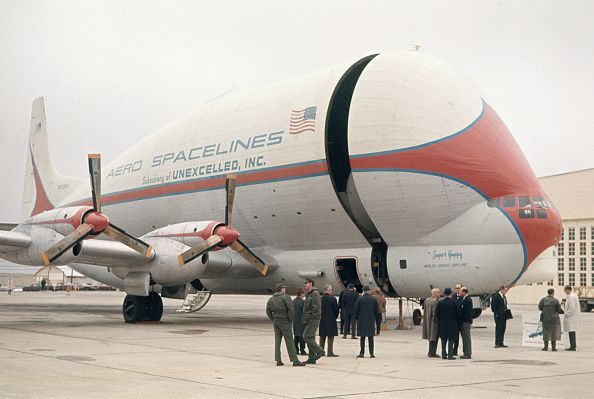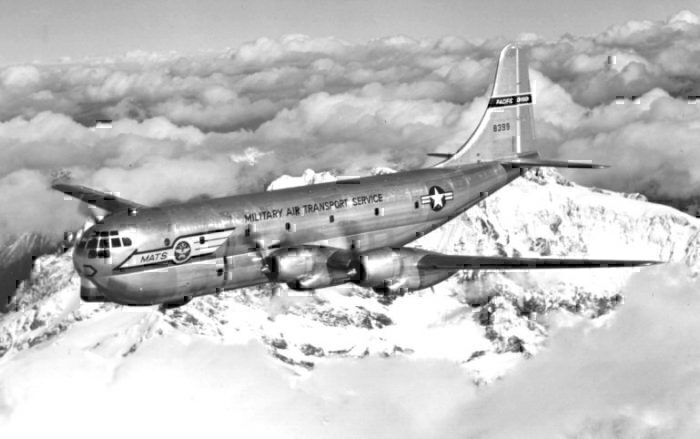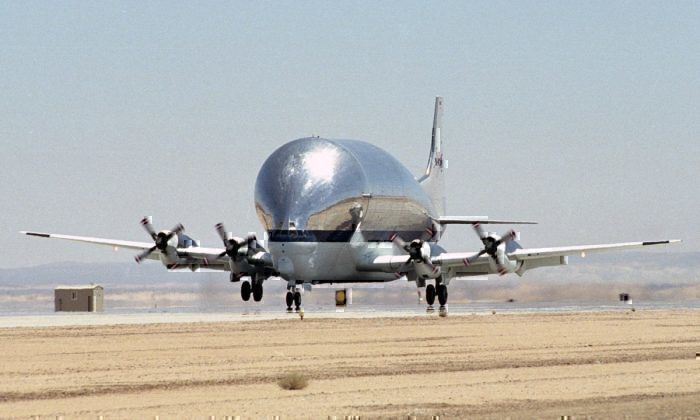Getting oversized cargo from one place to another has always been a logistics nightmare for governments and private industry around the world. This is why the National Aeronautics and Space Administration (NASA) decided to use the oversized Super Guppy aircraft for its operations.
Until you actually have to move something very large by road, rail or air, you never think about how it is going to navigate narrow roads, fit through tunnels, or pass under bridges. All of these obstacles make moving large objects extremely difficult and time-consuming.
Oversized cargo used to be moved by barge
Before supersized cargo aircraft like the Super Guppy were thought up in the early 1960s, oversized cargo was transported around the country by barges that took a very long time to get from one place to another. California-based Aero Spaceline Industries (ASI) solved the problem of moving oversized cargo in 1961 when they decided to rebuild a Boeing C-97 Stratofreighter and turn it into a massive cargo plane.
Specially designed to be able to carry components for the Gemini Space Program, the aircraft then called the Pregnant Guppy had the largest cargo compartment of any plane that had ever been built.
In case you were wondering how the Guppy got its name, it was purely a coincidence after a NASA worker said the plane looked like a pregnant guppy freshwater aquarium fish.
Transporting rocket components
What the introduction of the aircraft meant to NASA was that they were now able to transport rocket parts from California to Port Canaveral, Florida in 18 hours as opposed to the sometimes 25 days it would take by barge through the Panama Canal.
Before the aircraft's maiden flight near Los Angeles on September 19th, 1962, air traffic controllers were afraid that the shiny silver aircraft (that looked more like a Zeppelin than a plane) would encounter difficulties. As such, they contacted the police and fire department to be on alert in case of an emergency. In the end, the Guppy took off and safely landed without a hitch before going on to help America win the "space race" to put a man on the moon in 1969.
The initial Pregnant Guppy proved to be so successful at transporting oversized cargo that ASI rolled out an even larger version dubbed the Super Guppy in 1965. Equipped with a 25-foot diameter cargo bay, and more powerful Allison 501-D22C turboprop engines and a pressurized cockpit, the new Super Guppy was able to fly 1,700 nautical miles with a cruising speed of 250 mph.
During its illustrious years of service, the Super Guppy has clocked more than three million miles while playing a vital role in America’s Gemini, Apollo, Skylab, and the International Space Station programs.
The Super Guppy has more room than a C-5 Galaxy
Today, even though the aircraft is nearly 55-years-old, it can still carry more cargo than the military’s Lockheed C-5 Galaxy transport. Because of its capabilities, the Super Guppy has also attracted the attention of other government departments like the Air Force, who used it to transport Northrop T-38 Talon trainers. The Navy also used the Super Guppy to move Bell Boeing V-22 Osprey aircraft.
The Super Guppy’s rich space past may now be at an end. However, with few truly large cargo aircraft around, it continues to be one of the only practical options available when it comes to transporting oversized cargo.



